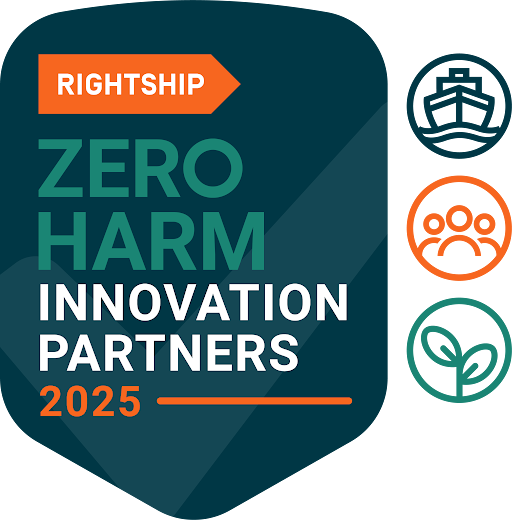The Role of Virtual Reality in Enhancing Maritime Training
Introduction
The maritime industry, with its rich history and tradition, has always been at the forefront of adopting innovative training methods to ensure safety, efficiency, and skill development. In recent years, the landscape of maritime training has undergone a significant transformation, influenced by technological advancements and the changing needs of the global shipping sector. This evolution reflects a shift from conventional classroom-based learning to more dynamic and interactive methods, with Virtual Reality (VR) emerging as a pivotal technology.
Virtual Reality, a computer-generated simulation of a three-dimensional environment, offers immersive and interactive experiences for users. In the context of professional training, VR stands out for its ability to create realistic, engaging, and controlled environments where trainees can practice and hone their skills without real-world risks or costs. This technology has become especially relevant in maritime training, where the complexity of operations and the potential for hazardous conditions make hands-on, experiential learning invaluable
Virtual Reality, a computer-generated simulation of a three-dimensional environment, offers immersive and interactive experiences for users. In the context of professional training, VR stands out for its ability to create realistic, engaging, and controlled environments where trainees can practice and hone their skills without real-world risks or costs. This technology has become especially relevant in maritime training, where the complexity of operations and the potential for hazardous conditions make hands-on, experiential learning invaluable
The concept of VR in professional training environments is not just about simulating real-world scenarios; it's about enhancing the learning experience. VR enables trainees to explore and interact with a life-like maritime environment, from navigating a vessel to conducting emergency response drills. This immersive experience significantly enhances learning outcomes by enabling trainees to apply theoretical knowledge in practical, real-world situations, leading to better retention and understanding.
Moreover, the advent of VR in maritime training signifies a broader shift towards digitalization in the industry. It aligns with the growing emphasis on safety and operational efficiency, as VR-based training programs can be standardized, ensuring consistent quality and compliance with international regulations and standards. This approach not only prepares maritime professionals for the complexities of modern seafaring but also equips them with the skills to handle advanced navigation systems, machinery, and safety protocols effectively.
In conclusion, the integration of Virtual Reality into maritime training represents a significant step forward in how training programs are designed and delivered. It offers a blend of realism, interactivity, and safety that traditional training methods struggle to match, marking a new era in the development of maritime professionals. As we delve deeper into the role of VR in enhancing maritime training, it's clear that this technology is not just an innovative tool but a transformative force reshaping the future of maritime training and competency development.
The Emergence of VR in Maritime Training
Historical Context: Traditional Training Methods in the Maritime Industry
For centuries, maritime training has relied heavily on hands-on experience, with apprenticeships and on-the-job training forming the backbone of seafarer training. Traditional methods, such as classroom instruction, shipboard drills, and simulator-based training, have dominated the landscape. These approaches are designed to impart the necessary skills and knowledge seafarers need to navigate the complexities of maritime operations. Instructors often use physical models, charts, and standardized simulators to teach navigation, ship handling, and emergency procedures.
Historically, the effectiveness of maritime training has hinged on the realism of the training environment and the ability to simulate real-world scenarios. However, limitations such as the high cost of full-scale simulators, the logistical challenges of coordinating live drills, and the inherent risks of training in hazardous conditions have posed significant challenges. Moreover, the static nature of traditional training methods has often struggled to adapt to the rapid advancements in maritime technology and regulations
The Shift to Digital: How VR is Becoming a Game-Changer in Training Methodologies
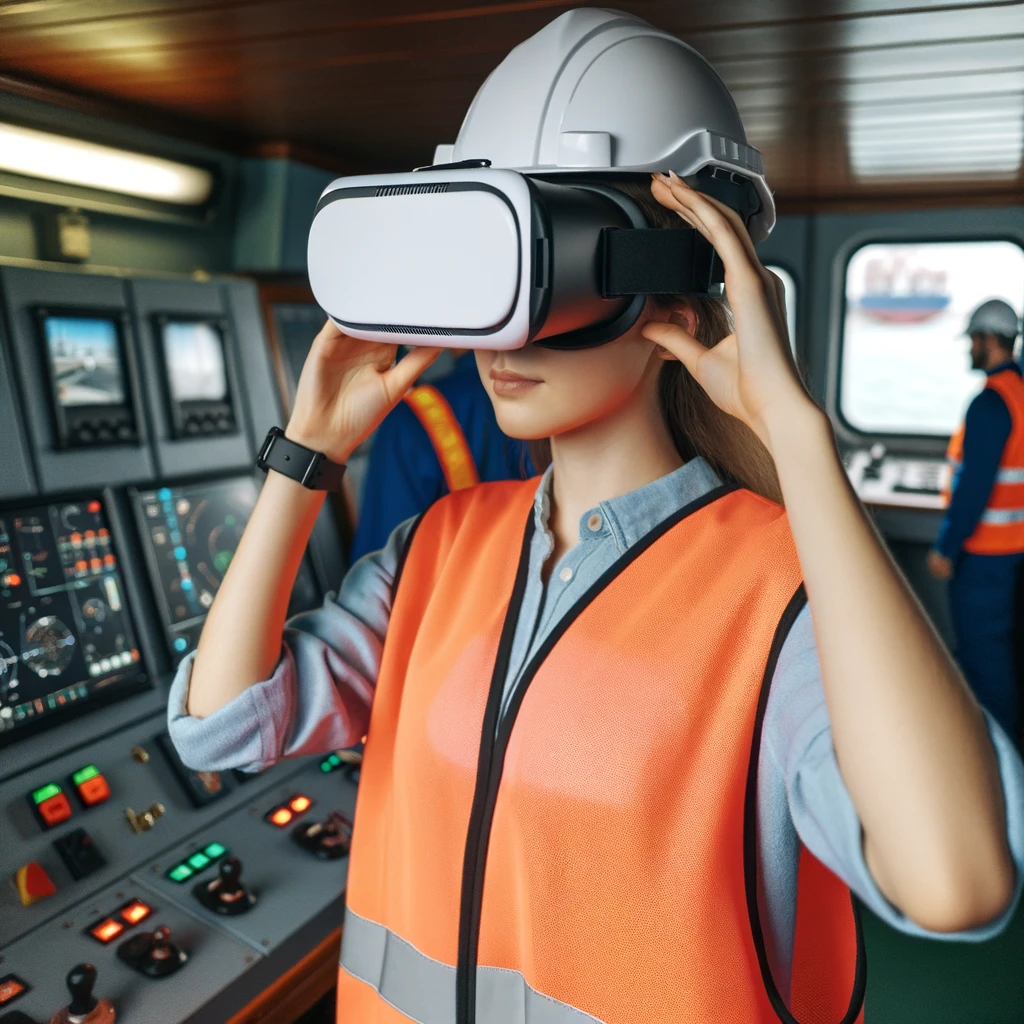
VR-based training can simulate complex maritime operations, from routine navigation to emergency response drills, in a safe and controlled setting. Trainees can practice maneuvers, troubleshoot equipment, and manage critical incidents repeatedly, honing their skills without the fear of real-life consequences. This method of training not only improves the learning experience but also enhances the retention of skills and knowledge.
The shift to VR in maritime training also addresses the limitations of traditional methods. It offers scalability, allowing multiple trainees to participate in a range of scenarios simultaneously, regardless of their physical location. This digital approach is more cost-effective and time-efficient than traditional simulator-based training, as it eliminates the need for physical space and reduces operational costs.
Furthermore, VR technology is highly adaptable to the evolving landscape of maritime operations. New scenarios and training modules can be developed and deployed quickly to keep pace with changing regulations, technological advancements, and operational best practices. This ensures that training programs remain relevant and can effectively prepare seafarers for the challenges of modern maritime environments.
In conclusion, the emergence of VR in maritime training represents a significant paradigm shift, offering enhanced training capabilities that are more aligned with the current and future needs of the maritime industry. By integrating VR into their training portfolios, maritime training institutions can provide more effective, efficient, and engaging training experiences for the next generation of seafarers.
Understanding VR-Based Serious Games
Definition and Explanation of Serious Games in the Context of VR
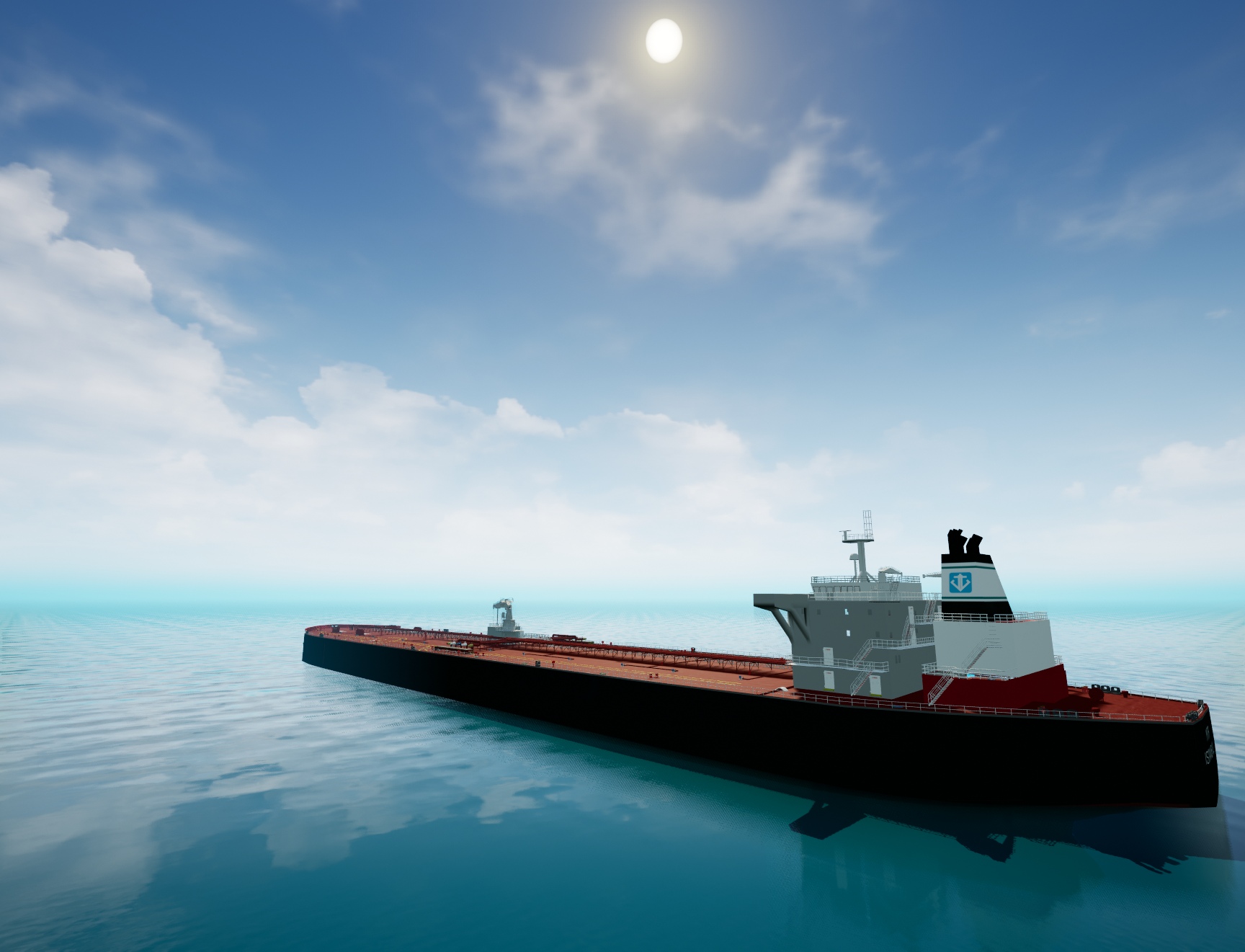
Serious games, a term that transcends the conventional boundaries of gaming, refer to games designed for purposes beyond mere entertainment, often targeting learning, training, or problem-solving objectives. In the realm of Virtual Reality (VR), serious games leverage the immersive and interactive capabilities of VR technology to simulate real-world environments and scenarios. This fusion creates a powerful tool for experiential learning, where participants can engage in lifelike situations, make decisions, and experience the consequences in a controlled, virtual setting.
The application of VR-based serious games in professional training environments, especially in sectors like maritime, aviation, and healthcare, has revolutionized traditional learning paradigms. These games are crafted to mirror the complexities and challenges of real-life tasks, offering users a hands-on learning experience that enhances understanding, retention, and practical application of knowledge
Overview of Maritime Trainer’s VR-Based Serious Games Offerings
Maritime Trainer harnesses the potential of VR-based serious games to deliver cutting-edge training solutions tailored to the maritime industry. These offerings are meticulously designed to replicate onboard and offshore conditions, allowing maritime professionals to hone their skills in navigating, operating, and managing maritime vessels and machinery in a risk-free, virtual environment.
The VR-based serious games by Maritime Trainer are characterized by their realism and attention to detail, ensuring that trainees face scenarios that are as close to real-life as possible. For instance, trainees can practice emergency response drills, navigational skills, and machinery operations without the actual risks associated with these activities at sea. This not only enhances their problem-solving and decision-making skills but also prepares them for effective response in critical situations.
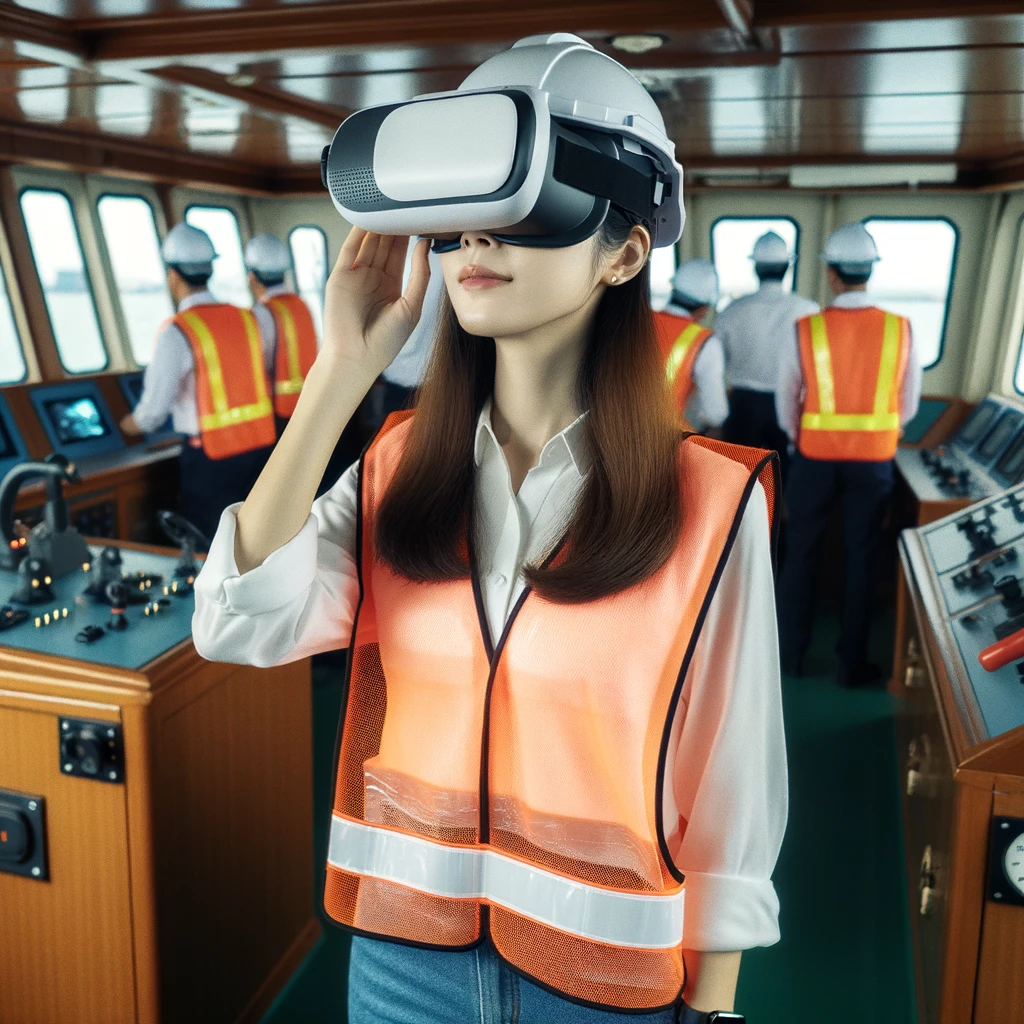
Maritime Trainer's VR offerings include a range of scenarios, from basic training modules to advanced tactical simulations, catering to a wide spectrum of maritime professionals, from novices to seasoned veterans. The immersive nature of these serious games ensures that trainees are not merely passive recipients of information but active participants in their learning journey, leading to improved engagement, better knowledge retention, and a more profound understanding of complex maritime operations.
In summary, VR-based serious games represent a transformative approach in maritime training, offering an interactive, engaging, and effective learning modality. Maritime Trainer’s innovative solutions in this domain exemplify the integration of technology and training, setting new standards in maritime training excellence.
Benefits of VR in Maritime Training
Immersive Learning Experience: Creating a Realistic Training Environment
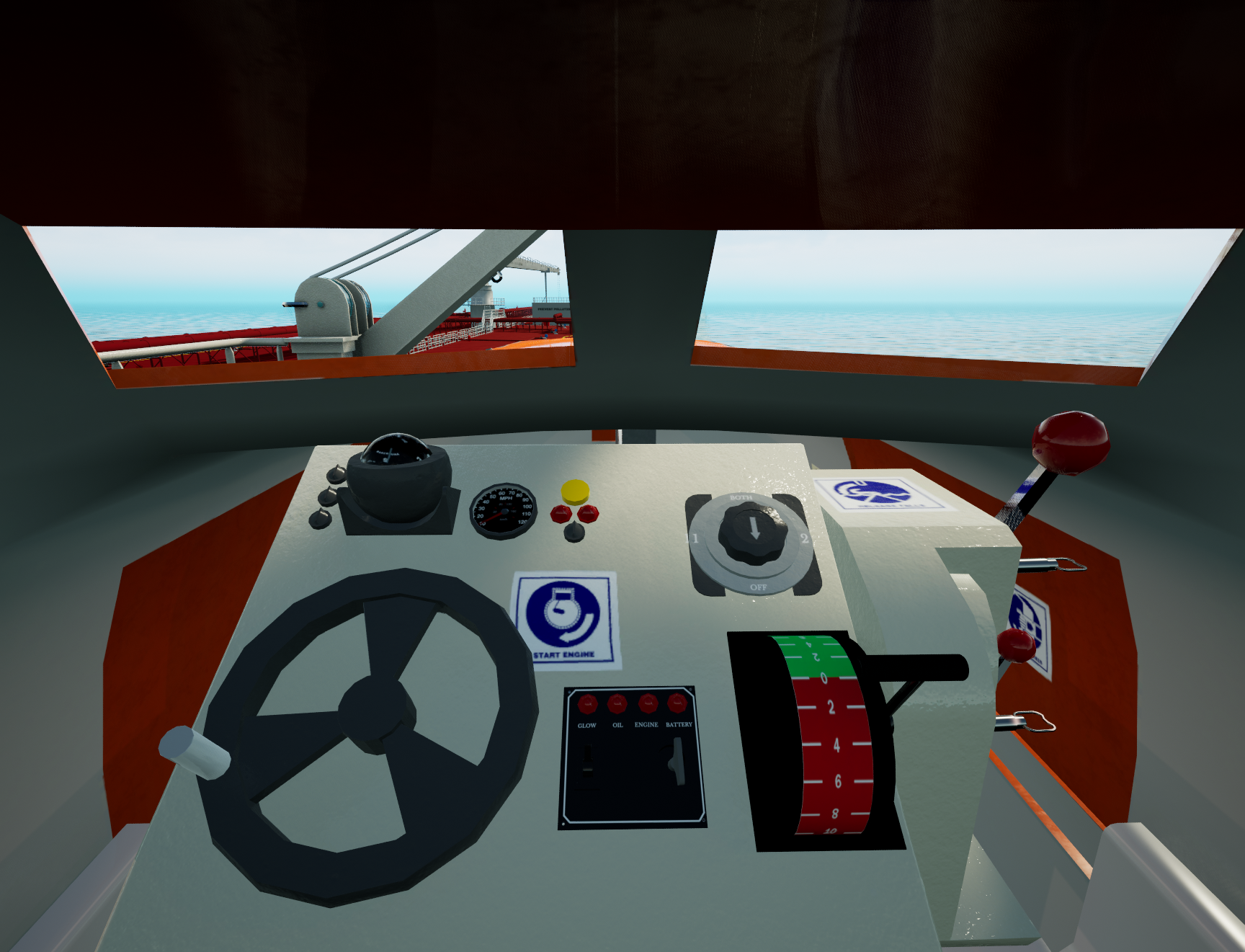
Virtual Reality (VR) stands at the forefront of learning innovation, offering an immersive learning experience that significantly enhances maritime training. Through VR, trainees can navigate through highly realistic 3D environments that simulate the actual conditions of maritime operations. This immersive experience not only captures the complexity of the maritime world but also engages the trainees in a way that traditional classroom settings cannot match.
The VR technology employed in maritime training allows for the creation of life-like simulations where every aspect, from the rolling waves to the sound of the engine, is meticulously replicated. This realism ensures that trainees can experience and interact with their environment in real-time, making decisions and reacting to scenarios as they would onboard a vessel. This level of immersion aids in building muscle memory and deepening the understanding of operational procedures, making the training process more effective and impactful.
Safety and Risk Management: Simulating Dangerous Scenarios Without Real-World Risks
One of the paramount benefits of using VR in maritime training is the ability to simulate dangerous or critical situations in a safe and controlled environment. Traditional training methods can only go so far in preparing maritime professionals for the unpredictability and potential hazards of the sea. VR technology, however, allows for the creation of complex emergency scenarios, such as fires, equipment failures, or severe weather conditions, without exposing trainees to actual danger.
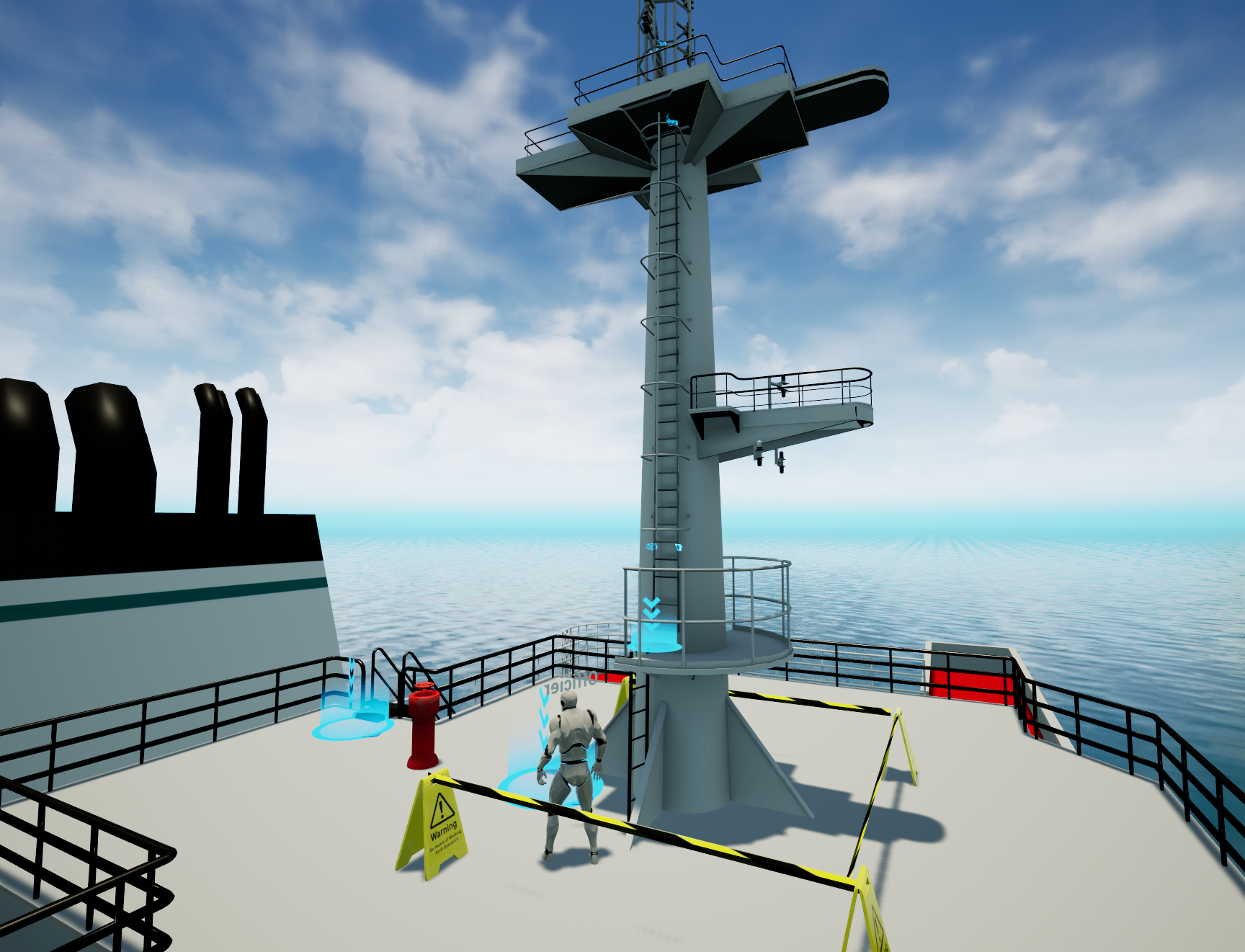
This risk-free training environment enables trainees to practice their responses to emergency situations, refine their problem-solving skills, and make critical decisions under pressure. The experience gained through these simulations can be invaluable, significantly improving safety and preparedness when faced with real-life emergencies at sea.
Cost-Effectiveness: Reducing the Need for Physical Resources and Logistical Arrangements
Implementing VR in maritime training also offers substantial cost benefits. Traditional training often requires expensive resources, including full-scale simulators, operational vessels, and the associated costs of travel, accommodation, and logistical arrangements. VR training, on the other hand, eliminates many of these expenses.
By transitioning to VR-based training, maritime organizations can reduce their reliance on physical resources, as trainees can access the virtual training environment from anywhere, reducing the need for travel and on-site attendance. Additionally, VR simulations can be easily updated or modified to reflect new regulations, technologies, or operational procedures, ensuring that the training content remains current and relevant without significant additional investment.
In conclusion, VR technology in maritime training offers a trifecta of benefits: an immersive learning experience that closely mirrors real-life conditions, enhanced safety through risk-free simulation of dangerous scenarios, and cost-effectiveness by minimizing the need for extensive physical resources. These advantages make VR an invaluable tool in the modern maritime training landscape, poised to redefine how maritime professionals are trained for the challenges of tomorrow.
Integrating VR Training into Maritime Training
The Process of Integration

Integrating Virtual Reality (VR) into existing maritime training programs involves a strategic blend of technology, pedagogy, and organizational change management. The process typically unfolds in several phases:
- Needs Assessment:
2. Technology Acquisition and Setup:
3. Curriculum Development
Collaborating with VR content developers to create or adapt existing training modules for VR. This involves ensuring that the VR simulations are accurate representations of real-world maritime scenarios and are pedagogically sound.
4. Instructor Training:
Preparing the training staff to facilitate VR sessions, which includes familiarizing them with the VR technology and integrating it into their teaching methodologies.
5. Pilot Testing:
Implementing a pilot program to test the VR training modules with a small group of trainees, allowing for feedback and adjustments before full-scale deployment.
6. Full Implementation:
7. Continuous Evaluation and Improvement:
Regularly assessing the effectiveness of the VR training and making necessary enhancements based on trainee performance, technological advancements, and evolving industry standards.
Challenges and Considerations
Integrating VR into maritime training is not without its challenges. Institutions must consider
- Cost and Budgeting: The initial setup for VR training can be costly, requiring significant investment in hardware, software, and content development. Budget constraints can be a major hurdle for many institutions.
- Technological Infrastructure: Ensuring that the existing IT infrastructure can support VR technology is crucial. This includes having sufficient computing power, graphics capabilities, and space for conducting VR training sessions.
- Training and Support: Both trainers and trainees need adequate support to adapt to the new technology. This includes ongoing technical support and training to effectively use and maintain the VR equipment.
- Curriculum Integration: VR training should complement, not replace, traditional training methods. Finding the right balance between conventional and VR-based training is essential for a holistic learning approach.
- Change Management: Resistance to change is common in any organization. Clear communication about the benefits of VR training and involving key stakeholders in the integration process can facilitate smoother adoption.
- Regulatory Compliance: Ensuring that the VR training programs meet the regulatory standards and certification requirements of the maritime industry is critical.
In summary, integrating VR into maritime training requires careful planning, significant investment, and ongoing support. Despite these challenges, the benefits of immersive, realistic, and engaging training experiences make VR an invaluable tool in modern maritime training programs.
Future Trends and Predictions in VR and Maritime Training
Upcoming Trends in VR and Maritime Training
The future of VR in maritime training is poised for significant evolution, driven by technological advancements and the growing recognition of VR's potential in professional development. Here are some trends to watch:
- Advanced Immersive Technologies: Beyond basic VR, we will see the integration of augmented reality (AR) and mixed reality (MR), offering a more nuanced and interactive training environment. These technologies will blend virtual and physical elements, providing trainees with a more comprehensive and immersive learning experience.
- Artificial Intelligence Integration: AI-driven VR simulations will become more prevalent, allowing for adaptive learning experiences that adjust to the skill level and progress of each trainee. AI can analyze performance in real-time, providing personalized feedback and modifying scenarios to challenge the trainee appropriately.
- Remote and Collaborative Training: With advancements in VR technology, remote training will become more effective and widespread. Trainees from different locations can collaborate and interact in the same virtual space, enabling more flexible and accessible training programs.
- Increased Realism and Complexity: VR simulations will become increasingly complex and realistic, with better graphics, physics engines, and sensory feedback. This will allow for more detailed and varied training scenarios, closely replicating the challenges faced at sea.
- Standardization and Certification: As VR training becomes more common, there will be a move towards standardizing VR training modules and integrating them into official maritime certification processes. This will ensure that VR training is recognized and valued across the industry.
Predictions for VR’s Impact on Maritime Learning and Training
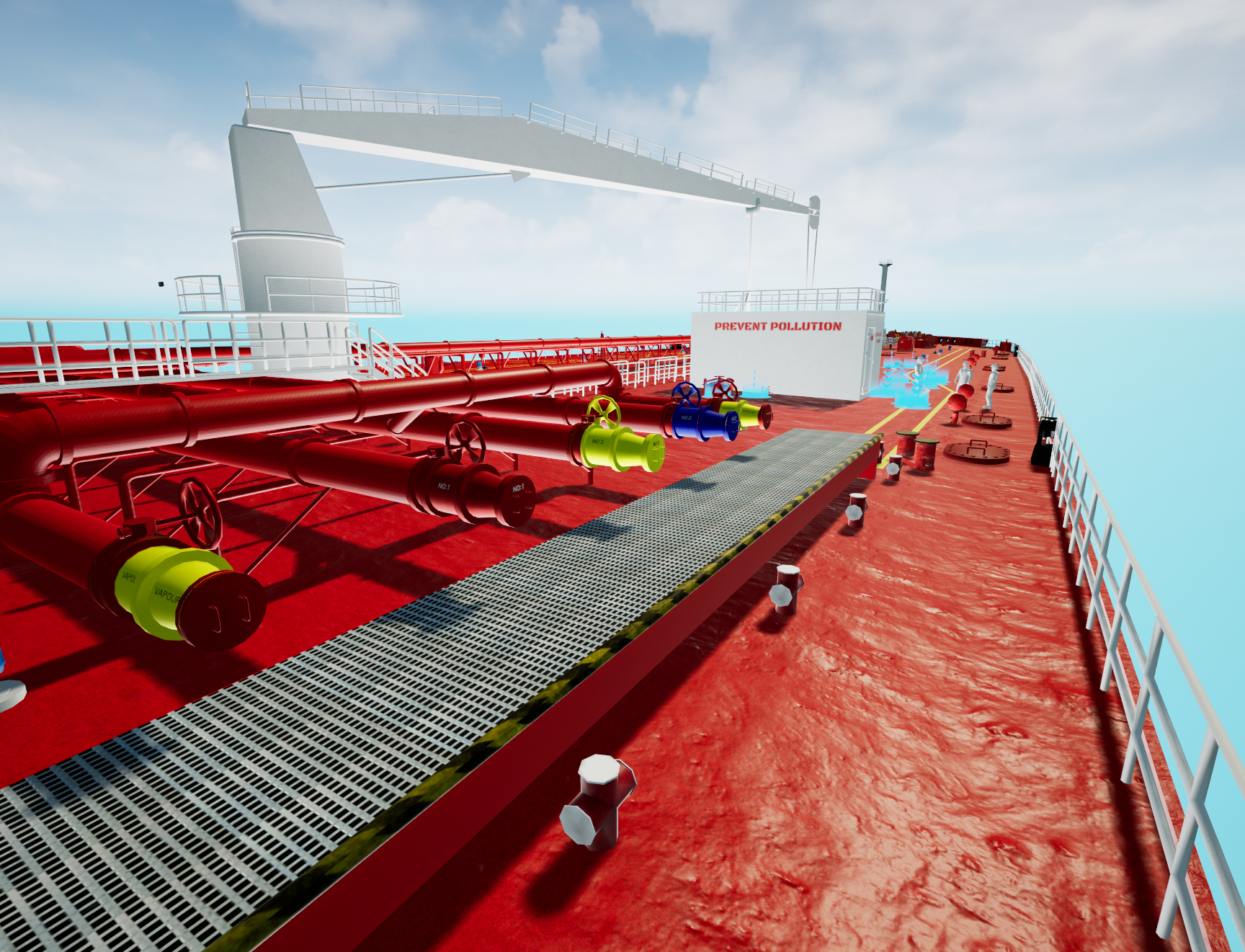
Looking ahead, VR is set to reshape maritime learning and training in several ways:
- Enhanced Training Efficiency: VR will streamline the training process, allowing trainees to learn and practice skills in a fraction of the time it would take in traditional settings. This efficiency will lead to faster onboarding and skill acquisition.
- Improved Safety and Risk Management: By simulating hazardous conditions and emergency scenarios in a risk-free environment, VR will significantly improve safety training, preparing maritime professionals to handle real-life challenges with greater competence and confidence.
- Global Collaboration and Standardization: VR technology will facilitate global collaboration in maritime training, allowing institutions worldwide to share resources, simulations, and best practices. This will contribute to a more standardized and consistent training framework internationally.
- Cost Reduction in Training Programs: As VR technology becomes more affordable and widespread, the cost of implementing VR training will decrease. This will make advanced training accessible to a broader range of institutions and individuals, democratizing access to high-quality maritime training.
- Data-Driven Training Approaches: VR will enable the collection and analysis of detailed training data, allowing for a more scientific approach to skill development. Institutions can use this data to continually refine and improve their training programs, leading to better outcomes and more efficient learning processes.
In conclusion, the integration of VR in maritime training is set to expand and deepen, with technology playing a pivotal role in shaping the future of maritime training. The advancements in VR and related technologies will transform how training is delivered, experienced, and valued in the maritime industry, ultimately leading to more skilled, adaptable, and competent maritime professionals.
Explore Maritime Trainer’s VR Offerings
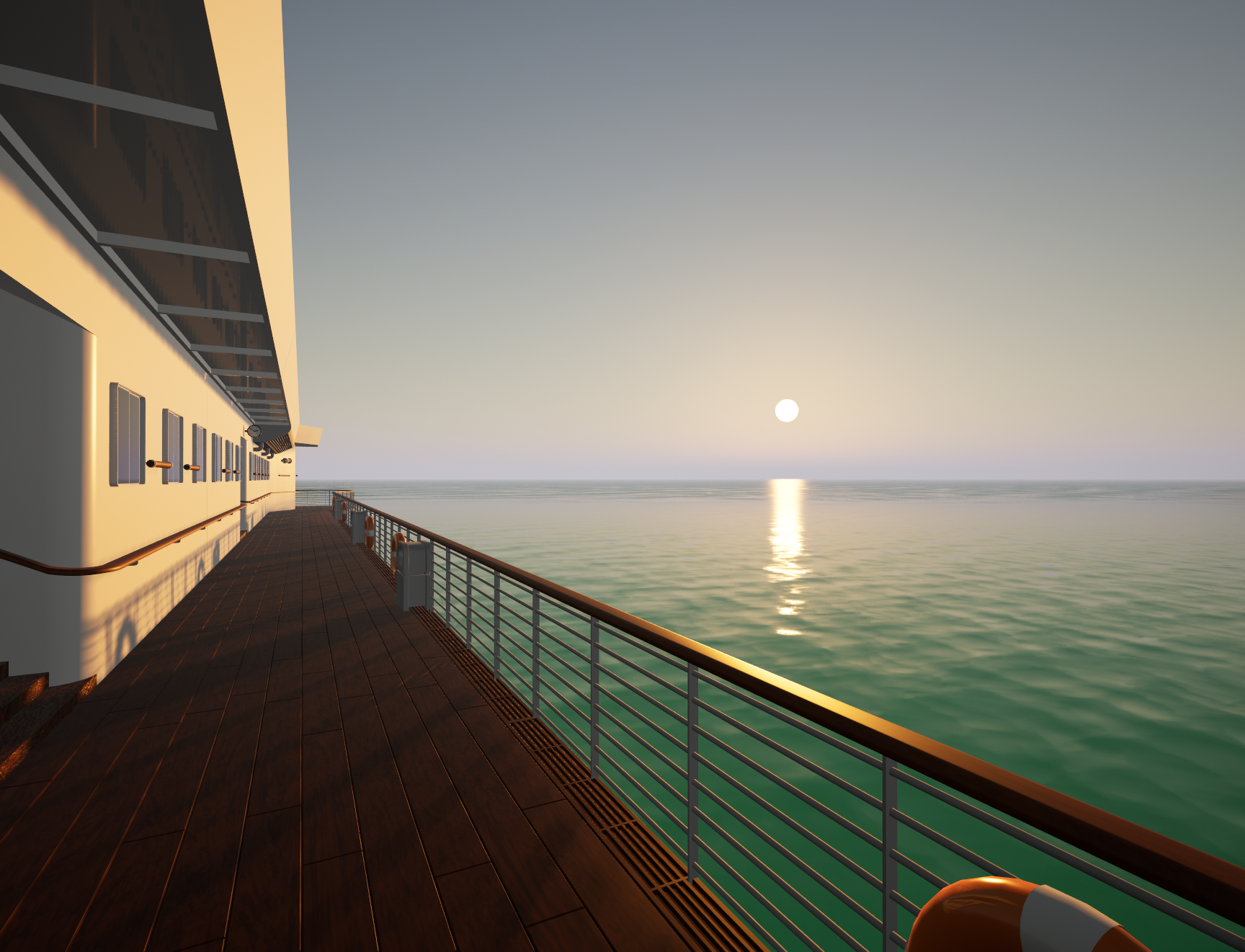

Dive into the future of maritime training with Maritime Trainer’s cutting-edge Virtual Reality (VR) solutions. Our VR-based serious games are designed to provide immersive, engaging, and effective training experiences that set new standards in maritime training.
Discover the Next Generation of Maritime Training
Visit the Maritime Trainer VR-based serious games page to explore our innovative training solutions. Witness first-hand how VR technology is revolutionizing maritime training, offering scenarios and simulations that replicate real-world challenges with unparalleled accuracy.
Why Choose Maritime Trainer for VR Training?
- Realistic Simulations: Our VR modules are crafted with meticulous attention to detail, mirroring the complexities of maritime environments to provide authentic training experiences.
- Comprehensive Learning: From basic safety drills to advanced navigational techniques, our VR offerings cover a wide range of maritime skills, catering to all levels of expertise.
- Risk-Free Environment: Trainees can practice and master essential maritime operations in a safe, controlled virtual setting, reducing the risks associated with traditional training methods.
- Cost-Effective Training: VR training reduces the need for physical resources, logistical arrangements, and travel, offering a more economical alternative to conventional training programs.
- Global Accessibility: Our VR solutions are accessible from anywhere in the world, breaking down geographical barriers and making top-quality maritime training more accessible.
Take the First Step Towards Enhanced Maritime Training
Embark on a journey to excellence in maritime training with Maritime Trainer. Our VR-based serious games are not just about embracing new technology—they represent a commitment to providing the best possible training for maritime professionals.
Ready to transform your maritime training experience? Click here to learn more about Maritime Trainer’s VR offerings and discover how we can help elevate your training to the next level. Join us in setting sail towards a future where virtual reality leads the way in maritime training and learning excellence.
Contact us


